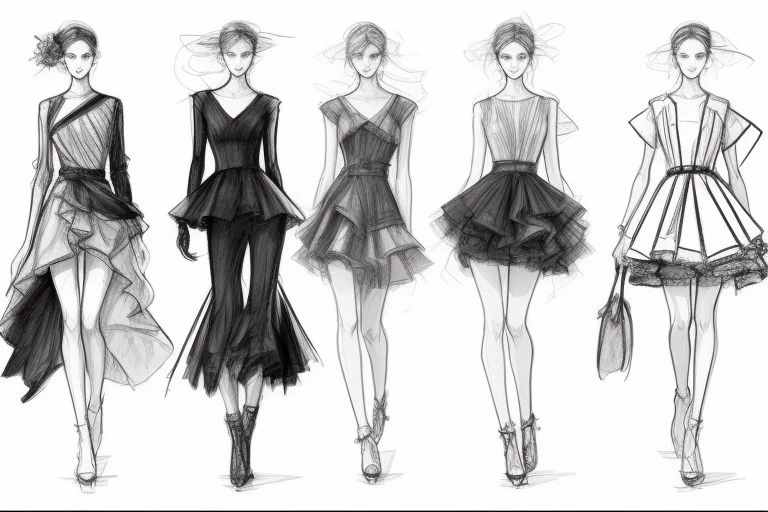Capturing movement in fashion sketches is vital for breathing life into your illustrations. It enhances the overall storytelling of your designs, connecting the viewer to the dynamic spirit of fashion. Whether you’re sketching the sweep of a gown on a breezy day or the stride of a model, these movements add depth and vibrancy to your work.
Understanding Movement in Fashion Sketches
Movement in fashion sketches isn’t just about illustrating a walking figure. It’s about infusing your creations with a sense of fluidity and action that transforms a static image into a lively portrayal of style.
The Importance of Dynamic Poses
Dynamic poses are the heart of expressive sketches. They bring energy and realism, making your illustrations more relatable and exciting. When a figure leaps off the page, it engages the viewer, creating an emotional connection with the design. A great resource for understanding this art is this article on creating dynamic poses and movement.
The Role of Fabric and Flow
Fabric isn’t just a flat surface; it’s a living part of the sketch. Portraying the movement of fabric captures the intricacies of fashion design. Consider how different materials interact with air and movement – they drape, twist, and swish with the body, adding layers of texture and complexity. For more insights on fabric depiction, explore how to finesse your fashion illustrations.
Techniques for Capturing Movement
There are several techniques an illustrator can employ to effectively capture movement in their sketches. Let’s explore some of them.
Using Gesture Lines
Gesture lines convey movement and direction, transforming simple outlines into vibrant scenes. They guide the viewer’s eye throughout the sketch, suggesting the energy and flow of motion. This step-by-step guide on gesture lines offers a comprehensive look at this technique.
Incorporating Asymmetry
Asymmetry is a powerful tool in creating action and flow. Asymmetrical designs break the monotony, suggesting dynamism and imbalance, which are natural parts of movement. The idea is to create tension and interest, drawing the viewer into what seems like an ongoing moment. Fashion Illustration Tribe provides valuable insights into asymmetry’s role in movement depiction.
Mastering Anatomy and Proportions
Understanding human anatomy is fundamental for capturing movement authentically. Knowing how muscles work and how limbs bend allows for more accurate illustrations. Proportionally correct figures move naturally, enhancing the realism and fluidity of your sketches.
Practical Tips for Sketching Movement
Practicality meets creativity in these tips, perfect for artists aiming to hone their skills in capturing movement.
Practice with Live Models
Live models provide real-time examples of movement. They help artists understand how the body can contort and flow. Regular practice with live models sharpens observation skills and improves your ability to capture nuance and detail. Check out this Reddit discussion on drawing moving subjects for community tips.
Experimenting with Different Angles
Changing angles can dramatically affect the perception of movement. Sketching from various viewpoints can challenge perspective and enhance a sketch’s dynamic quality. Questions like “What if the figure were seen from above?” can lead to unexpected and thrilling results.
Utilizing Reference Photos
Reference photos are invaluable for studying movement. They allow artists to pause, examine, and understand positions and gestures, helping translate motion into two-dimensional sketches. Learn more about using photos as references here.
FAQs
Why is capturing movement in fashion sketches important?
Capturing movement conveys the essence and emotion of a design, connecting the viewer with the fashion’s story.
What tools can help in illustrating movement?
Gesture lines, understanding of anatomy, asymmetrical designs, and reference photos are key tools for illustrating movement.
How can I improve my skills in capturing movement?
Regular practice with live models, experimentation with different angles, and studying reference photos can enhance your skills over time.
Conclusion
Capturing movement in fashion sketches isn’t merely a technique—it’s an art form that adds soul and excitement to your designs. By mastering gesture lines, embracing asymmetry, and understanding anatomy, you breathe life and movement into your work. As you practice these techniques, your sketches will become more dynamic, engaging, and inspiring. Now, grab your sketchbook and start capturing the world of fashion in motion!


